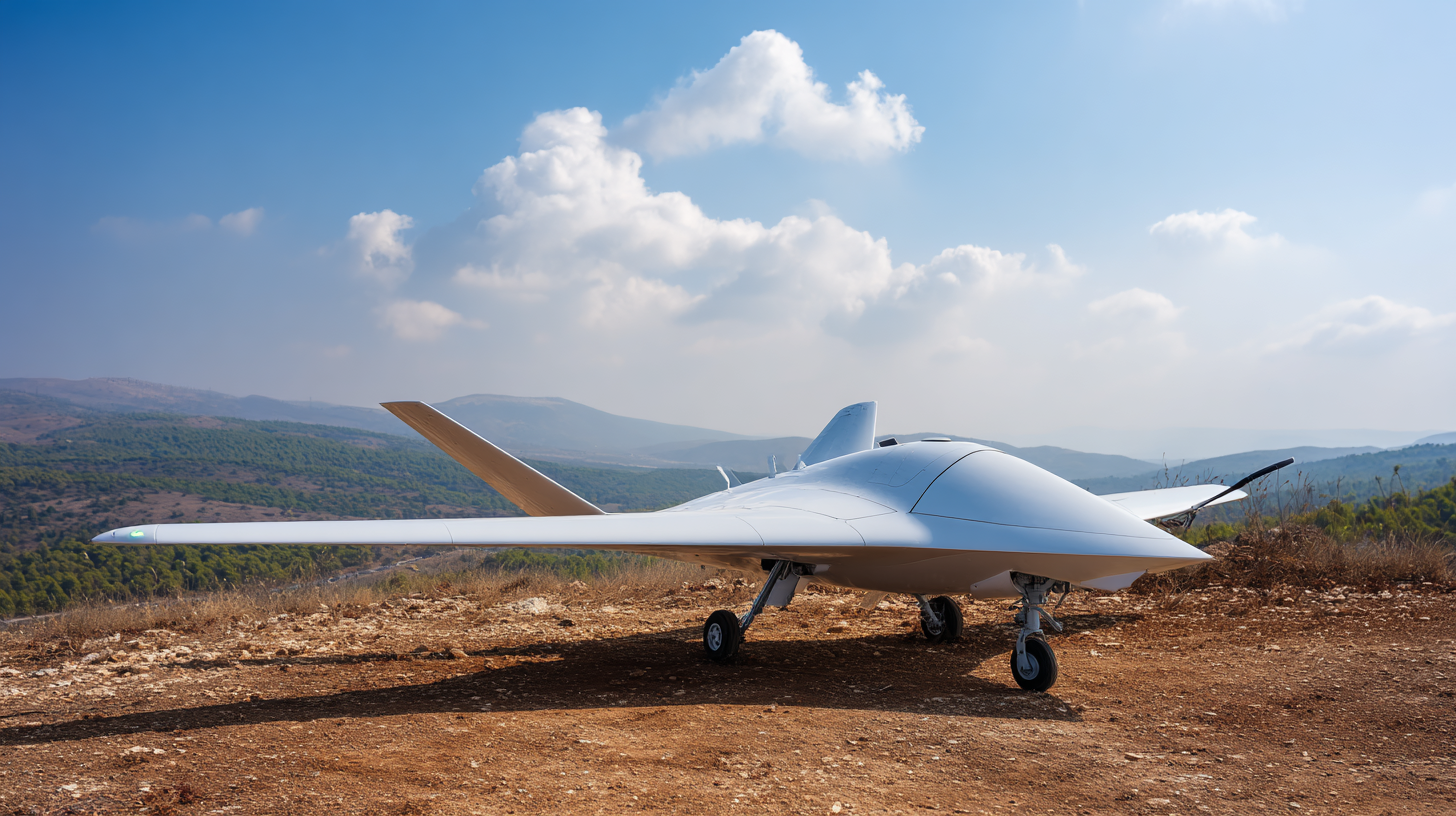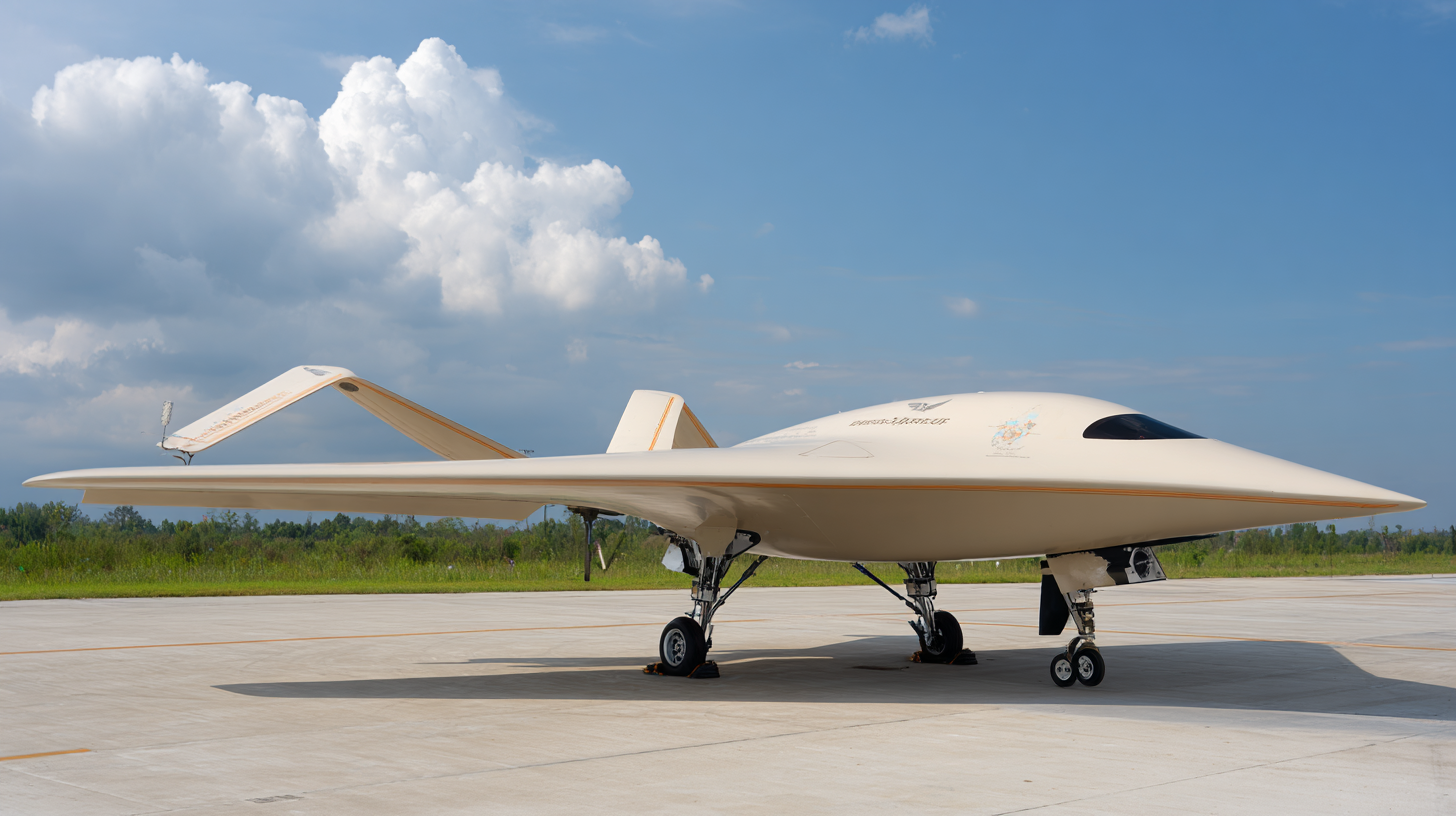Leave Your Message
In the rapidly evolving landscape of modern aviation, the emergence of the Delta Wing UAV Drone has captured significant attention due to its unique aerodynamic advantages and operational efficiencies. According to a recent report by the Global UAV Market, the segment is projected to grow at a staggering CAGR of 15% over the next five years, fueled by increasing applications in surveillance, agriculture, and environmental monitoring. The distinctive design of Delta Wing UAV Drones not only enhances maneuverability but also improves fuel efficiency, enabling longer flight durations and greater payload capacities. As industry demands shift towards more advanced and versatile unmanned systems, understanding what sets the best Delta Wing UAV Drones apart becomes crucial for stakeholders aiming to leverage this technology in their respective fields.

The evolution of delta wing UAV design has significantly shaped modern aviation, as these aircraft models continue to deliver heightened efficiency and performance. Historically, the delta wing configuration was primarily employed in high-speed military applications, but its benefits have been recognized in various sectors, including surveillance, agriculture, and environmental monitoring. According to a report by MarketsandMarkets, the global UAV market is expected to reach USD 28.9 billion by 2026, with delta wing designs carving out a substantial segment due to their aerodynamic advantages.
One of the standout features of delta wing UAVs is their ability to maintain stability and control during high-speed flight. The unique shape reduces drag and enhances lift-to-drag ratios, enabling longer flight durations and increased operational range. A study by the International Journal of Aerospace Engineering noted that delta wings can achieve a lift-to-drag ratio of over 10:1, which is particularly beneficial for reconnaissance missions where endurance is crucial. As advancements in materials and technology progress, the future of delta wing UAVs holds exciting potential, promising to further transform aerial operations across diverse industries.
 The modern aviation landscape increasingly embraces delta wing UAVs due to their distinct aerodynamic advantages and performance characteristics. One of the key features that enhance the performance of these drones is their ability to efficiently manage airflow during flight. A comprehensive mathematical model developed using simulation tools like MATLAB and Simulink has shown that this optimization can significantly improve stability and maneuverability in various flight conditions. This innovative approach not only facilitates the design of more efficient UAVs but also enables real-time adjustments to adapt to dynamic environments.
The modern aviation landscape increasingly embraces delta wing UAVs due to their distinct aerodynamic advantages and performance characteristics. One of the key features that enhance the performance of these drones is their ability to efficiently manage airflow during flight. A comprehensive mathematical model developed using simulation tools like MATLAB and Simulink has shown that this optimization can significantly improve stability and maneuverability in various flight conditions. This innovative approach not only facilitates the design of more efficient UAVs but also enables real-time adjustments to adapt to dynamic environments.
Additionally, the integration of bionic morphing wings has emerged as a significant trend in delta wing drone design. Inspired by nature, these wings exhibit transformative capabilities akin to avian flight, enhancing the overall agility and responsiveness of the UAV. Research indicates that such morphing mechanisms can lead to a reduction in drag while increasing lift, thereby maximizing operational range and efficiency, particularly in challenging aerial tasks. As the technology evolves, delta wing UAVs equipped with these intelligent features promise to redefine the standards for performance in modern aviation.
In the rapidly evolving world of aviation, China's drone manufacturing sector has harnessed innovative materials and cutting-edge construction techniques to create the best delta wing UAV drones. These advancements are pivotal in enhancing performance, durability, and efficiency. The utilization of composite materials, such as carbon fiber and advanced polymers, significantly reduces the overall weight of the drones while increasing their structural integrity. This not only boosts flight times and payload capacities but also improves maneuverability, making delta wing UAVs an appealing choice for various applications, including surveillance, agriculture, and logistics.
Moreover, the integration of 3D printing technology into the drone manufacturing process has allowed for a level of precision and customization previously unattainable. This method enables manufacturers to produce complex geometries and lightweight components that enhance aerodynamic efficiency. Simultaneously, the adoption of smart manufacturing practices, including automation and real-time monitoring, plays a key role in ensuring consistent quality and rapid production cycles. As a result, these innovations position China at the forefront of the UAV industry, ready to meet the demands of modern aviation while continually pushing the boundaries of what is possible.
| Feature | Description | Impact on Performance |
|---|---|---|
| Lightweight Composite Materials | Use of carbon fiber and other advanced composites. | Increases efficiency and maneuverability. |
| Aerodynamic Design | Optimized delta wing shape for reduced drag. | Enhances flight speed and stability. |
| Modular Construction | Easily replaceable parts for quick repairs. | Reduces maintenance time and operational downtime. |
| Advanced Propulsion Systems | Integration of high-efficiency motors and batteries. | Increases flight duration and range. |
| Embedded AI Technology | AI for real-time decision-making and navigation. | Enhances mission adaptability and efficiency. |
The integration of advanced technology has significantly enhanced the capabilities of delta wing UAVs, positioning them as frontrunners in modern aviation. A report by ResearchAndMarkets indicates that the global UAV market is expected to grow from $22 billion in 2022 to over $58 billion by 2030, with delta wing designs leading in various applications due to their aerodynamic superiority and fuel efficiency. Advanced materials such as carbon fiber composites reduce weight while improving strength, allowing these drones to achieve impressive flight durations and operational ranges.
Furthermore, innovative avionics and control systems have transformed delta wing UAVs into highly autonomous platforms. According to a study by MarketsandMarkets, the UAV autopilot systems market is projected to reach $2.5 billion by 2025, driven by demand for enhanced navigation and mission execution capabilities. Technologies like AI-powered flight planning and real-time data fusion enable these drones to adapt to dynamic environments, making them invaluable tools in sectors from agriculture to defense. As these advancements continue to evolve, delta wing UAVs are set to redefine efficiency and effectiveness in a variety of aerial operations.
The global market for Unmanned Aerial Vehicles (UAVs) has seen significant evolution, particularly in the segment of delta wing drones. Their unique design not only enhances aerodynamic efficiency but also offers versatility in various applications. The rise of delta wing UAVs can be attributed to their superior flight performance and stability at different speeds and altitudes. As industries seek more efficient ways to gather data, monitor environments, and conduct missions, the demand for delta wing UAVs continues to grow, making them a favorite choice among military, agricultural, and commercial sectors worldwide.
 Looking ahead, the future of delta wing UAV applications appears promising. Advancements in technology, such as artificial intelligence and improved battery life, are paving the way for more autonomous operations. This evolution will enable delta wing drones to perform complex tasks with minimal human intervention. Moreover, as regulatory frameworks become more accommodating, the usage of these UAVs in urban environments and beyond is set to expand. This will not only enhance operational capabilities but also foster innovations in surveillance, environmental monitoring, and disaster response, cementing the delta wing UAV's position in modern aviation.
Looking ahead, the future of delta wing UAV applications appears promising. Advancements in technology, such as artificial intelligence and improved battery life, are paving the way for more autonomous operations. This evolution will enable delta wing drones to perform complex tasks with minimal human intervention. Moreover, as regulatory frameworks become more accommodating, the usage of these UAVs in urban environments and beyond is set to expand. This will not only enhance operational capabilities but also foster innovations in surveillance, environmental monitoring, and disaster response, cementing the delta wing UAV's position in modern aviation.
